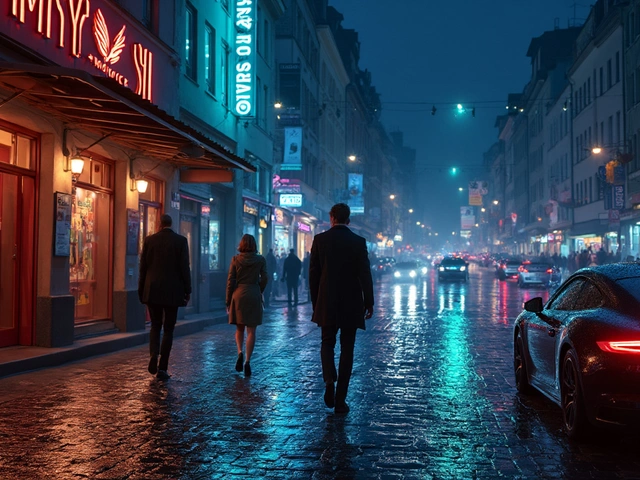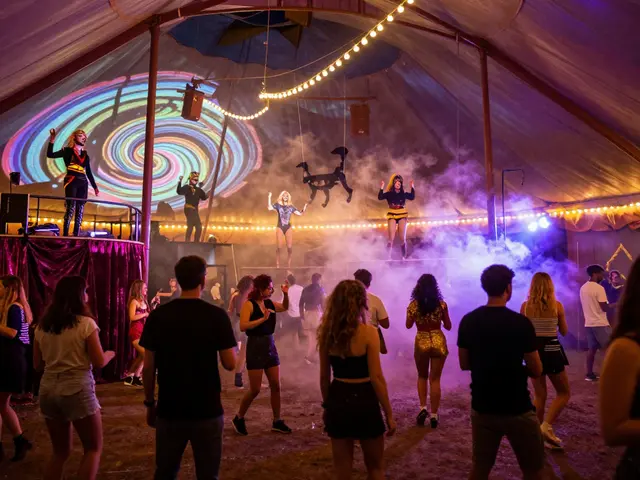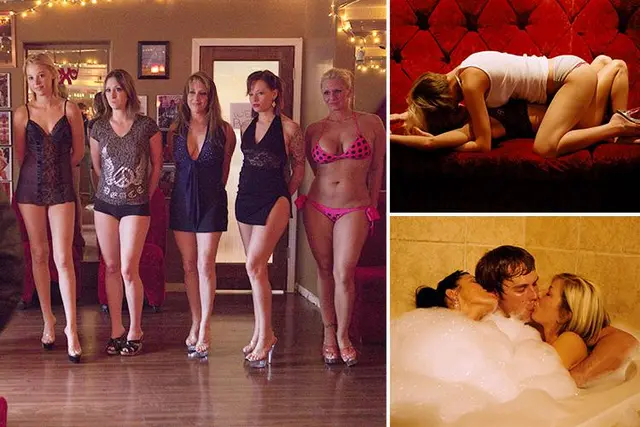The World of Supermodels: How Grace and Glamour Took Center Stage
Ever find yourself staring at a magazine cover, totally hypnotized by a model’s pose? You’re not alone. There’s just something magnetic about the best supermodels—those rare people who became names like Cindy, Naomi, and Gisele. They changed what it meant to be a star in fashion, for sure, but here’s the catch: supermodels did way more than look fabulous. Step behind the curtain and you see a world of sweat, wild competition, untold stories, and game-changing influence—think mega-runs across multiple continents, campaign deals bigger than some film actors, and the power to set new standards in beauty.
Picture the big runway shows—Paris, Milan, New York. It’s not just about walking straight in nine-inch heels (although that’s a circus trick in itself). These shows are showcases of mood, ambition, and the ever-shifting conversation around what’s considered beautiful. Models are expected to hold up under brutal schedules, endless fittings, jet lag, and a torrent of flashing cameras. There are even stories of supermodels rushing from one show to another, changing outfits in moving cars just to make it on time. It’s a world that rewards nerves of steel and a smile that looks effortless no matter what’s happening behind the scenes.
Let’s not forget what really kicked all this off. While models have been around since the late 19th century, the idea of a “supermodel”—someone instantly recognizable, who transcends regular gigs—really exploded in the late 1980s and early ’90s. Remember the famous British Vogue cover with Linda Evangelista, Naomi Campbell, Christy Turlington, Tatjana Patitz, and Cindy Crawford? That single photo helped catapult those five to stratospheric fame. Suddenly people weren’t just buying a dress—they were buying the whole persona. Supermodels are brands in their own right.
Fast-forward to the twenty-first century, and the formula has only gotten more complicated. Social media flipped the script: Instagram and TikTok mean suddenly anyone has a shot (in theory) at stardom, while the original supermodels’ influence still lingers in every “smize” and perfect walk. Current icons like Kendall Jenner or Gigi Hadid command millions of followers, but the basic requirements—a magnetic presence, work ethic like a triathlete, and the ability to adapt—still stand. The digital world let’s fans glimpse a bit more of what’s real, but the mystery and allure don’t go away. Now, with high fashion embracing more diversity, male models and plus-size icons are finally getting their own share of the spotlight. Everyone’s watching to see who will become the next game changer.
| Supermodel | Era Highlight | Signature Traits |
|---|---|---|
| Naomi Campbell | 1980s-2020s | Iconic walk, charisma, first Black model to appear on Vogue France |
| Cindy Crawford | 1990s | ‘Pepsi Girl,’ famous mole, business acumen |
| Gisele Bündchen | 2000s | Highest-paid in industry, made “the Brazilian bombshell” an icon |
| Kendall Jenner | 2010s-2020s | Massive social reach, cross-over TV fame |
| Adut Akech | 2010s-2020s | Refugee to runway, champion of diversity |
The supermodel story is really a story about influence—on movies, music, style, and even the way we talk about gender or self-expression. All that glamour doesn’t come easy; these pros are masters at reinvention, bouncing back from setbacks, and riding waves of public trend almost year by year. They turn “walking” into a language of cool.
What Defines a Supermodel? Context, Fame, and the Power of Iconic Beauty
So why do people call some models “supermodels” while others are just models? It’s less about a checklist and more about this gravity, this pull—they’re not just faces, they’re industry shakers. To be a supermodel, fame has to stretch way beyond the fashion world. That means starring in blockbuster campaigns, headlining beauty brands, and, yes, being instantly known by a single name. When you say “Naomi,” “Kate,” or “Tyra,” you don’t need a last name—everybody knows.
The line between model and supermodel got way clearer in the late 1980s when these new faces started getting their own TV shows, movie cameos, and even landing on Forbes lists. Back then, Claudia Schiffer once joked, “In order to be a supermodel, one must be on all the covers all over the world at the same time so people can recognize you.” And she wasn’t wrong. Supermodels became as ubiquitous as movie stars and sometimes out-earned them—like Gisele Bündchen, who Forbes listed as the world’s highest-paid model for over a decade. She raked in contracts with brands from Chanel to Victoria’s Secret, reportedly earning over $400 million in her career.
But here’s something most people miss—supermodels play a huge role in shifting beauty standards and sometimes, even rewriting what “cool” looks like. Think about Iman, who paved the way for women of color on high-end runways. Later, Ashley Graham smashed the long-held size standard as the first plus-size model to land the cover of Sports Illustrated’s Swimsuit Issue. In just one magazine, you saw that powerful message: sexy and beautiful comes in all shapes.
This might surprise you: it doesn’t take a certain height or size to make waves anymore. New York’s runways still have those old minimums (around 5'9" is standard for high fashion), but stars like Winnie Harlow, who has vitiligo, or Jillian Mercado, who uses a wheelchair, have shown you can change the game by just showing up as yourself and refusing to accept “no.” For guys, Tyson Beckford broke barriers for Black male models in the ’90s, while David Gandy made his mark with that famous Dolce & Gabbana campaign that’s still talked about today.
What about those jaw-dropping paydays? Check this out—at their peak, Linda Evangelista famously said, “We don’t wake up for less than $10,000 a day.” Not an exaggeration. Top supermodels sign exclusivity deals for runway seasons or campaigns, sometimes earning more for a single photo shoot than most people see in a year. Some, like Heidi Klum, leveraged their names into empires—she launched TV shows, fashion lines, and more, proving that influence lasts long after the last catwalk strut.
- Supermodels often become global ambassadors for causes—think Christy Turlington’s work on women’s health or Adwoa Aboah’s activism for mental health and diversity in fashion.
- They have serious business savvy. From launching their own brands to taking creative director roles, the smartest use their platform to build something lasting.
- Staying power matters. The original “big five” from the ’90s are still walking catwalks and fronting campaigns today—longevity is the real flex.
In short, to be a supermodel is to be recognized, yes, but even more, to have the power to change what the world wants to see. That mix of impossible poise, street-smart adaptability, and a knack for making a cultural dent—that’s the secret recipe.
Inside the Life: Tips, Realities, and How Supermodels Stay Iconic
Ever wondered what it’s really like to live in a supermodel’s skin? Let’s break down the reality—no filters. First thing: getting to the top is pretty much Navy SEAL training for your confidence. These people have faced every critique imaginable and have had to master resilience early. Before the first contract gets signed, most spend years bouncing between castings, often hearing flat-out “no” way more than “yes.” They put up with jet lag, unfamiliar cities, and impossible schedules—imagine hopping from Paris to Tokyo with barely time to eat, let alone sleep. The money is big at the very top, but most work for almost nothing at first, hustling hard just to make a name.
But don’t think it’s all glam and red carpets. A supermodel’s real work starts when the cameras click off: careful eating, consistent skincare, workouts that would make most people cry, and a constant pressure to keep evolving. Many admit the pressure can be intense—so if you ever want in, learning to care for your mind is as crucial as your body. Some famous faces meditate, journal, or even see psychologists to keep leveled out in a high-pressure industry.
Want some practical tips straight from the pros? Here you go. First, treat your body like a formula that needs daily tweaks. Drink water—like, way more than you think. Most supermodels say they get at least eight hours of sleep whenever possible. And sunblock? It’s almost a religion. For fitness, many swear by a mix of strength training, pilates, and yoga. On days off, some love nothing more than a comfy hoodie and zero makeup; the best style is the one that feels like you. Staying well-rounded—learning languages, reading, and picking up business skills—sets the future icons apart from the short-lived hype.
Here’s one secret: networking matters. The fashion industry is smaller than you’d think. Build friendly relationships with photographers, makeup artists, stylists, and agents, and suddenly doors start opening. Don’t be afraid to reach out and introduce yourself. Some biggest breaks have come from being in the right conversation at the right time.
Lastly, the best models all say the same thing: know who you are. As beauty standards evolve—embracing more cultures, sizes, gender identities—the ones who refuse to fit a mold, who bring something real to the table, often go the furthest. And yes, social media counts. Use it to showcase not just your look, but your voice and point of view. It’s not about chasing trends, but about owning your own brand of “cool.”
- Newcomers? Sign with agencies that value your career and don’t overpromise. A legit agency will never ask for money up front.
- Stay aware: Modeling scams are everywhere—do solid research and trust your gut if something feels sketchy.
- Treat every job as a chance to learn: Even bad experiences can connect you with contacts or teach you what to avoid next time.
Here’s what to remember: supermodels are made, not born. They get to the top through relentless work, constant reinvention, and a stubborn belief that style is as much about attitude as outfits. Not everyone will get the cover of Vogue, but the world of fashion now fits a lot more stories. That means whatever makes you unique just might be your ticket to the big time.





connor dalton
I've always been fascinated by how supermodels represent more than just fashion—they're like walking stories of culture and identity. The way the post highlights their role in defining glamour is really insightful. How do you think the concept of glamour has evolved with changing societal values, especially around diversity?
It seems nowadays, the fashion world is embracing a broader spectrum of beauty, which is refreshing. But I wonder if the core idea of 'grace and iconic style' remains the same or has morphed with these cultural shifts. Any thoughts?
Kari Watkins
Honestly, the word "supermodel" has always been somewhat overused, but when you break down the concept of them as absolute icons—yes, there's a certain old-world glamour that can only be emulated but not replicated. It’s that rarefied aura of exclusivity coupled with effortless poise.
The guide captures this essence beautifully. I just wish there was more exploration of the fashion houses that really propelled these legendary careers. The drama, the backstories, the scandals—all of which add layers to their iconic status. Glamour is as much about what’s behind the scenes as what’s on the runway.
Daniel Landers
Wow, what a cool dive into the world of supermodels! 😍 I think it's wild how their influence goes way beyond just clothes and catwalks—they basically mold trends for entire generations. 💥 And let's be honest, it's not just about looking good; it’s about an attitude that really defines style and confidence.
The post could definitely expand more on how supermodels impact the culture at large, too. So many of them use their platforms for activism these days, which I find super inspiring! 🌟
Ashok kumar
Listen, the world of supermodels isn't just glitter and glam—it's a complex theatre of human emotion and philosophical posturing! They become avatars of a cultural morality that screams ‘look at me, but also don’t.’ Their grace masks the volcanic drama boiling underneath.
The post touches lightly on stories and facts, but to truly honor these figures, one must acknowledge the existential battles, the theatrical rise and fall, and the symbolic power they wield. Are they idols or tragic heroes? Or both? This ambiguity is what makes their legacy eternally fascinating.
Kathryn MERCHENT
Honestly, I think there's a lot to be proud of when it comes to supermodels who come from strong national backgrounds. They bring a certain fierce pride to the runway that can't be duplicated by anyone else.
The post was interesting but I feel it didn't stress enough on how some nations export their icons and influence globally. It's more than fashion—it's about representing your culture fiercely.
Emily Cross
It feels like we often celebrate these shiny, polished stories without diving too deep into what hides underneath. Yes, they defined glamour but that gloss can be super deceptive.
Sure, the myths uplift but also imprison these figures. The 'ultimate guide' might do well to question the very idea of iconic style—whose ideologies does it serve? I mean, are we celebrating art or consumerist spectacle?
Amal Benkirane
I appreciate how this post gently recognizes the human stories behind these famous faces. As much as they represent glamour, they also remind me that behind every runway smile is a human with dreams, struggles, and passions.
It would be great for guides like this to also put emphasis on the kindness and advocacy many supermodels show. That balance between glam and genuine empathy is what truly makes someone iconic in my eyes.
Amit krishna Dhawan
The descriptive approach to explain the evolution of supermodels really resonated with me, especially how their presence has influenced global fashion philosophies. The linguistic precision in narrating their impact adds a certain theatrical drama befitting the subject.
I believe the post could further explore the connection between fashion and socio-political change, illustrating how supermodels sometimes become icons reflecting era-defining moments.
Kelly O'Leary
This post is a lovely overview, but it’s important also to acknowledge the cultural responsibility that comes with such influence. Being a supermodel is more than style; it’s about respecting diversity and heritage within the fashion world.
It’s encouraging to see these icons now often using their platforms to uplift cultural narratives and promote inclusion, which truly enriches the concept of glamour beyond surface level.
Abhishek Gowda
OMG the power these supermodels have is quite emotional!! 😭🔥 They inspire millions in so many ways, not just looks but passion and courage too!! The post is amazing but I want more on their personal journeys, the ups and downs, the heartbreaks and triumphs—it’s a rollercoaster!! 💖💫
The blend of glamour and realness is what makes their stories so unforgettable. Totally can’t wait for more like this!! 😍